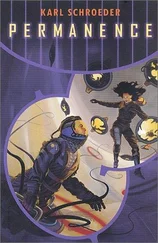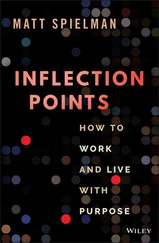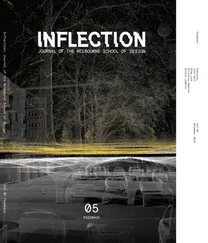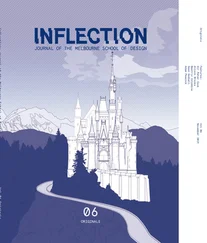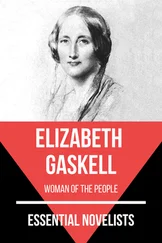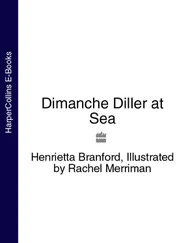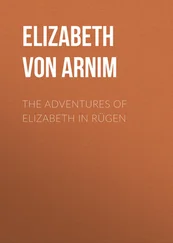The fall of the Berlin Wall in 1989 and the subsequent reunification of the two German states led to a unique set of conditions that defined the Berlin lifestyle into the late 1990s. The collapse of the GDR economy after the opening of the Wall and the emigration to West Germany of many former East German citizens meant an excess of Freiraum —a word encompassing the ideas of both ‘open space’ and ‘freedom.’ For a brief period during the reunification process, the east of the city found itself in a situation in which the government’s regulative legal stipulations were far from strictly enforced. The potential spaces this atmosphere bore were just the sort that creative types from both East and West Berlin knew how to exploit. This formed the basis for a multi-layered urban practice that would soon become a draw card for people from all over the world. Vacant buildings and properties were reoccupied and reprogrammed. The cost of living was low. Experimentation was in the air; with the fall of the Wall everything seemed possible. This led to countless informal, self-initiated projects such as squatted blocks of flats, illegal bars and clubs, and makeshift galleries. Berlin’s transformative years offered fertile ground for the selfdetermined design of lifestyles, housing and work.
Berlin’s persistent and ongoing appeal has developed without—and perhaps despite—urban planning or urban development policy. The authoritarian gesture by which half-baked façade nostalgia was cemented as the only true urbanist dogma for Berlin recalls the pathological behaviour of parents who furnish their child’s first flat according to their own tastes—which is exactly what the centre of Berlin looks like today, with its dreary sandstone blocks. The opportunity to redefine the city socially, spatially and aesthetically was wasted. 7
The unification treaty dictating the dissolution of the GDR and its accession into the Federal Republic of Germany specified that, in lieu of awarding compensation, properties were to be retroceded to their previous owners. 8This covered property holdings that had been expropriated without compensation in the former GDR and transferred to public ownership. Because the GDR had no such regulations, the scope of the law was expanded to include the loss of assets as a consequence of Nazi persecution. This led to considerable turbulence in the real estate market in the east of Berlin and ultimately resulted—in combination with the effect of the funds issued by the state for renovating and modernising existing properties—in massive rent increases in the housing market, such that many districts experienced an almost complete demographic exchange within ten years.
To alleviate some of Berlin’s massive debt, the sale of state-owned land and real estate led to further privatisation of municipal property throughout Berlin. The generated returns were only marginally profitable and the city’s economic gain short-lived. After all, from a long-term perspective the transactions reduced the leeway for policy formulation to mere years, and thus opportunities for sustainable urban development were wasted. In particular, the sale of state-owned housing associations and the privatisation of a great number of social housing units resulted in a lack of affordable dwellings and accelerated the nascent processes of gentrification.
A vision of Tempelhof Freiheit.
© raumlaborberlin
With the turn of the millennium came a gradual change. Berlin’s ethereal and improvised sense of spirit began to vanish. The city’s former embrace of life was replaced by an ever-growing compulsion for security. This trend has accelerated significantly since the 2008 financial crisis. The resistance to this trend expressed itself not only in protests, but also in the ever more strategic formulation of alternative economic models and the establishment of new alliances.
Wir sind hier nicht zum Spass 9
The planned closure of Tempelhof Airport and its replacement on a different site was part of a treaty conceived of at the end of the 1990s—a time when the common belief was that Berlin, as Germany’s restored capital, would undergo rapid growth and increased prosperity. Whilst that transformation would not to take place until almost 20 years later, the decision to close Tempelhof was upheld, and a master plan for its transformation was developed by the city.
A rare instance of vast open space located in the heart of a city, Tempelhof was a tabula rasa on valuable land. The master plan stipulated re-zoning for the entire airport site, mostly as residential. However, prior to its planned closure, it became clear that due to a weakened real estate market, the existing master plan could not be implemented in the short term without private investment from outside the government. This caused concern for the affordability of such housing developments. The pending cessation of operations and a looming election created considerable political pressure against the site being used for commercial development, triggering a desperate search by the sitting government for alternative visions and models for the Tempelhofer Feld, an area roughly 365,000 square metres. In 2006, the Senate Department for Urban Development and Housing commissioned a study by Ideenwerkstatt Tempelhof— Idea Workshop Tempelhof. The group, formed especially for this project, was an agglomeration of spatial activists and practitioners working in Berlin comprised of mbup, Urban Catalyst and raumlaborberlin.
In parallel to the top-down master planning program, the Ideenwerkstatt Tempelhof study seized on Berlin’s existing expertise in informal planning, employing a bottom-up approach of activation through use. As the Senate’s master plan could not be re-routed at this point, the study assumed an incremental and adaptable approach to its implementation. Whilst the master-plan thought in terms of the overall and indelible design for the airfield, the Ideenwerkstatt concept concentrated on the initial five years after its closure.
As an alternative model of land use to standard development, the project speculated that sustainable urban development could instead rely financially on long-term leasehold agreements with various groups. The aim was to factor greater cultural, social and symbolic capital into the process, allowing all actors to share in the success and value creation of the collective achievement. Through a varied and adaptive approach, the study could run as a series of experiments, testing ideas that could later be accepted or rejected depending on their relative success. This allowed for a level of flexibility and fitness not afforded by the master-plan, and has since become an approach employed by raumlabor in many projects.
The most important actors were the so-called Raumpioniere (Urban Pioneers) who consisted of various cultural entrepreneurs, initiatives, individuals and associations. Their approach involved exploring and activating terrain, triggering a process of open negotiation and urbanisation. Some Raumpioniere were temporary users, whilst others became involved in the long-term development of the former airport. Actors participated by proposing uses for designated areas on the airfield in which to test their ideas and desires, thereby activating the site as a series of spatial laboratories. Proposals included a bicycle workshop, a skate park and timber workshops. The most successful project was the Allmende Kontor, an urban gardening project with over 2,000 members, which still exists today.
In a politically motivated response to the Ideenwerkstatt Tempelhof, strategic organisational structures were proposed by the State of Berlin and the Senate of Urban Development, which reflected the insights gained from local activities by the Raumpioniere and which were supposed to provide support as the official master plan was implemented. In practice though, the invitation of groups like Ideenwerkstatt Tempelhof and the Raumpioniere to supplement the master-plan suffered at the outset from a lack of mutual trust between administration representatives and the actors of the informal urban development. As the dialogue that was originally sought never transpired on equal footing, the recommendations of the study were only implemented half-heartedly by the Senate. As a result, raumlabor learnt that empowering people to meaningfully impact their own urban environment would necessitate seeking out pockets of space within the city that are unimportant enough in the eyes of the Senate to fly under the radar of political bureaucracy.
Читать дальше

